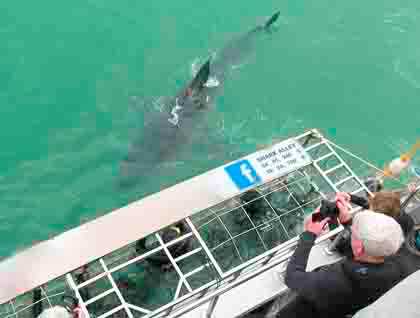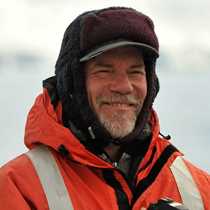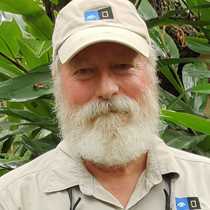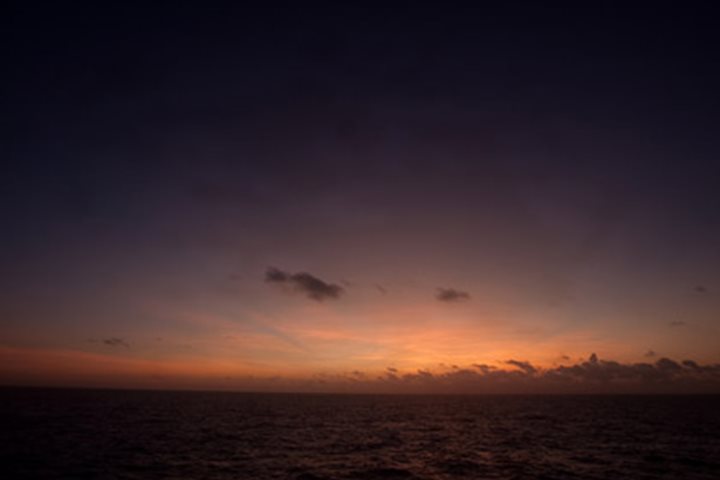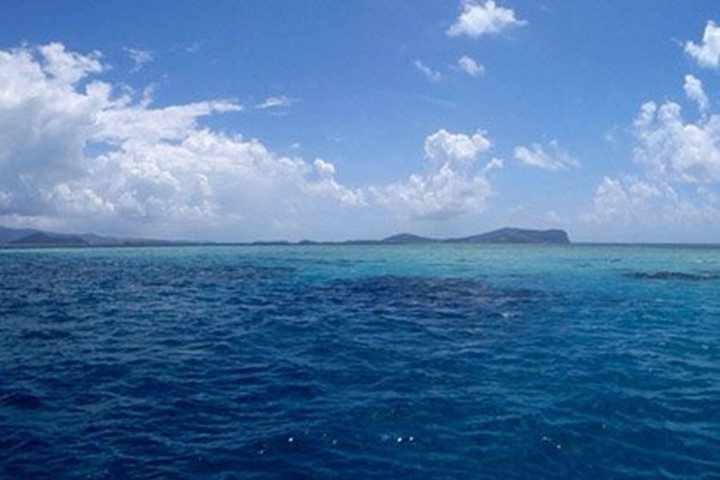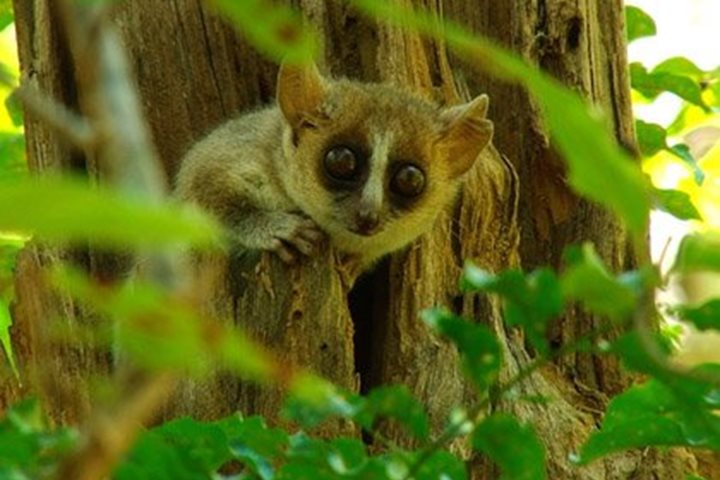Our day began in true expedition style. Last night, gale force winds had closed the harbor at Cape Town before we could sail, so instead of waking up at anchor off Hermanus we found ourselves still alongside the dock where we boarded the ship the previous afternoon. No problem. Tim and Linnea had made all the necessary arrangements, the coach drivers and guides who were waiting in Hermanus were up and on the road back to Cape Town at 4:00 a.m. and by 6:30 a.m. the first of us was on our way, just as planned.
The ride up to Gaansbaai and Hermanus proved to be an unexpected highlight. We drove southeast from Cape Town, along the coast and then up into the steep escarpment of the Hottentot-Holland Mountains. The spectacular cliffs that form the western face of the mountains then gave way to rugged, rocky valleys that led out onto another coastal lowland, all covered with a lush growth of fynbos, the unique shrub and herb community of southernmost Africa.
We had set out in several different groups, each with a different activity planned. First out were the intrepid shark divers, who had chosen to spend their day seeking close encounters with South Africa’s famous great white sharks. In Gaansbaai we had an excellent briefing on the biology and conservation of sharks – where we learned that electric toasters kill forty times more people each year than all sharks do. Armed with this thought, we headed down to the excursion boat and set out into the waters that are home to the world’s largest population of white sharks. Soon we were at anchor not far off a sandy beach and before we could even finish getting on our wetsuits the first shark arrived! It was Rosie, a well-known female over thirteen feet long. The first eight of us who were ready hurried down into the cage, which was secured to the side of the boat, allowing us to easily surface to breathe and then duck under to see the sharks swim by. The water was cold and very green, so underwater views of the sharks were limited, but of course the simple fact of being in the water with such a beautiful predator made it all worthwhile. And the scene from the boat was both spectacular and fascinating. We had perfect views as several huge sharks swam past the cage again and again, right at the surface, while the biologists on board told us about the work they were doing to better understand these remarkable ocean predators.
The other two groups set out from the ship a little later, also made the beautiful drive up through the coastal mountains and then turned inland toward Fernkloof Nature reserve where they set out on long or medium hikes up through the unique shrubland known as fynbos. This plant community, which is exceptionally diverse and home to many endemic species, is a part of the Cape Floral Kingdom, by far the smallest of the six floristic kingdoms of the world – a great place for botanists and hikers alike. As we walked we were surrounded by acres of the rare plants of this region, including the famous proteas, restios, and ericas and many others that we learned about from our guides. The hike led us up through steep-sided rocky valleys to a wonderful viewpoint that looked out over the coast and the town of Hermanus. This pretty little town was our next destination, for a visit to a very large and active abalone farm, where we learned about the life cycle of these tasty mollusks and the aquaculture industry that produces and exports many tons of them each year, mostly to markets in Asia.
Our busy expedition day concluded with a Zodiac ride back to the National Geographic Orion, which met us at the small port of Gordon’s Bay, halfway between Cape Town and Hermanus. Back on board we were all very happy to join the Captain and his officers at the Welcome Cocktail Party, where we toasted to a stylish beginning to our African expedition.

